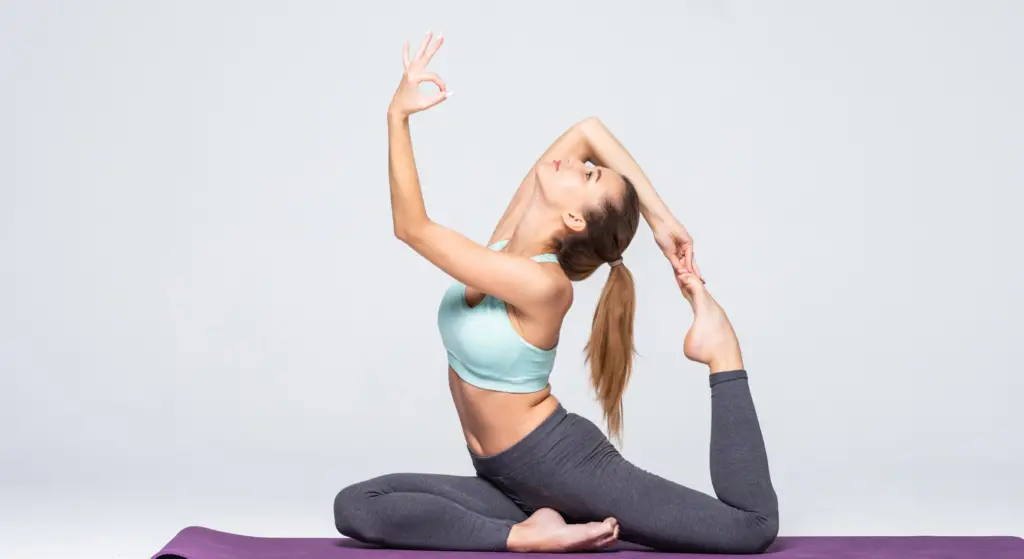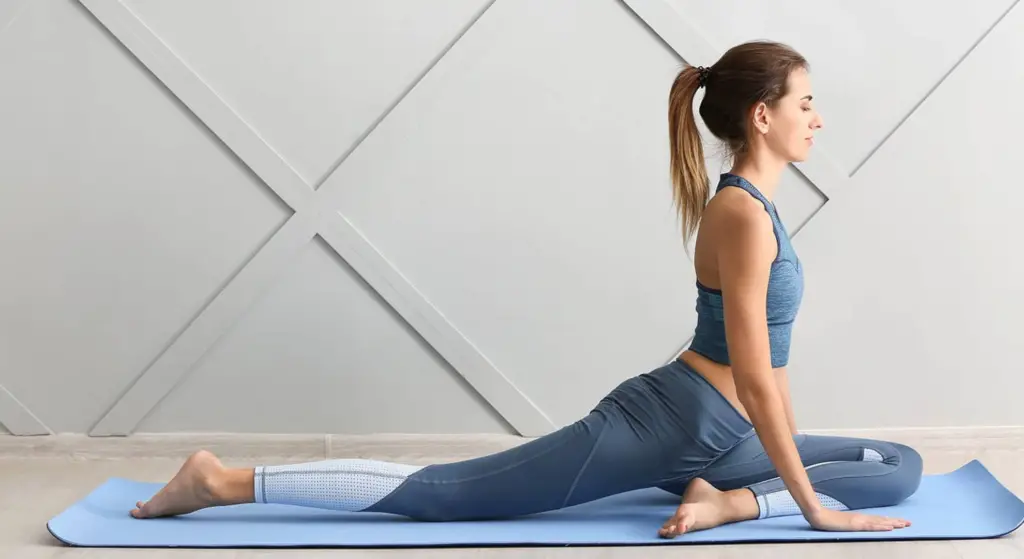
Yoga has become an increasingly popular way for people to improve their health, reduce stress, and find inner peace. Over 36 million people in the United States practice some form of yoga (source). However, some Christians view yoga as contradictory to their faith due to its historical roots in Eastern religions like Hinduism and Buddhism. This leads many Christians to ask – is practicing yoga compatible with Christianity?
The answer is yes. While yoga originated from religious backgrounds, the physical practice of yoga and its health benefits can be separated from those spiritual traditions. Many Christians practice yoga while remaining deeply devoted to Christ. With some simple modifications regarding the style and delivery of instruction, Christians can safely practice yoga while upholding the teachings of Scripture.
Incorporating yoga into life as a Christian follower can lead to better health, reduced stress, improved focus, and deeper spiritual growth. The postures, meditation, and breathwork help calm the mind, reduce anxiety and depression, lower blood pressure, and much more.
This guide will discuss how Christians can practice yoga in a way that aligns with biblical principles. We will cover:
The goal is to empower Christians to experience the numerous physical and mental health benefits associated with yoga. When practiced mindfully, yoga can enrich a believer’s spiritual walk with Christ.
Table of Contents
Is Practice Yoga as a Christian Against?
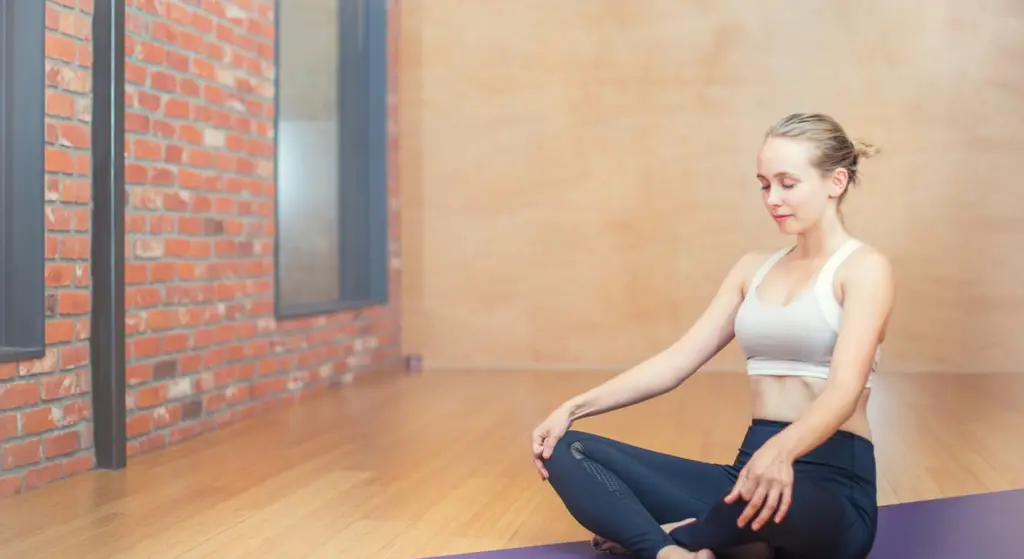
There are many misconceptions about yoga being incompatible with Christianity. While yoga originally stems from Hinduism, the yoga practiced in Western cultures is generally more focused on physical poses and breathwork to enhance the mind-body connection. This aspect of yoga is not in conflict with Christianity.
However, it is true that some styles of yoga intermix the physical components with elements of meditation, spiritual chanting, and non-Christian worship. This entanglement between yoga and Eastern spirituality causes confusion for many Christians looking to practice:
“Can I practice yoga if I am a Christian?”
The answer relates to what form of yoga you select. There are various schools of yoga:
A yoga practice can have varying degrees of spirituality. For example, chanting “Om” and practicing sitting meditation can invoke spiritual meaning for some Hindus and Buddhists. However, these specific rituals are not essential components of a physical yoga practice.
Many respected Christian leaders believe you can practice yoga without adopting non-Christian spiritual beliefs:
“Yoga is not a religion. It is however a spiritual discipline, which means it’s meant to draw people closer to the divine.” – Erin Stutland, Christian yoga instructor
So in summary, the key question is whether you can separate the physical practice of yoga from the religious aspects. Most Christian yoga practitioners argue you can through the right style and instruction modifications.
Tips for Practicing Yoga as a Christian
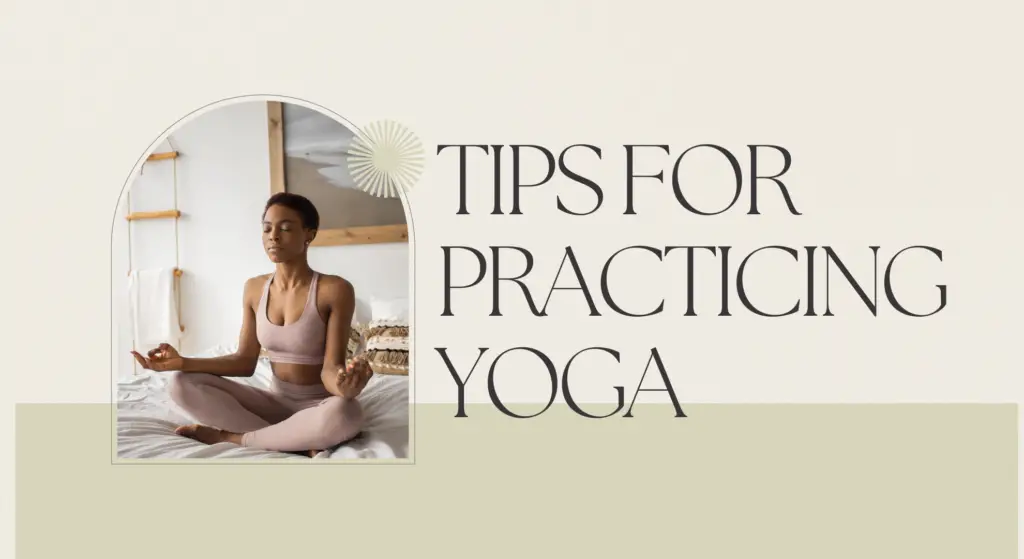
Practicing yoga while upholding your Christian faith requires some mindfulness and modifications. But incorporating Christian themes into your yoga practice is simple once you understand how.
Finding the Right Style of Yoga
All styles of yoga work to improve physical fitness and reduce stress. However, some forms may drift too far into spiritual rituals contrary to Christian beliefs.
These yoga styles are typically the best suited for Christians:
Whereas these styles may incorporate more Hindu spiritual components:
So research the class, studio or video you intend to practice with to understand if the content aligns with your Christian faith. Focus on yoga purely for physical/mental benefits without spiritualism.
Being Aware During Your Practice
As you progress through your yoga workout, maintain present moment awareness. Use the time to pray, recite Scripture, or listen to worship music.
Avoid participating in the following:
You can also replace traditional terms with Christian themes:
This allows you to achieve a meditative, centered state while remaining devoted to your Christian faith.
Modifying Poses
Some specific yoga poses relate to Hindu gods or spiritual ideas. Consider modifying or avoiding these poses:
Surya Namaskar (Sun Salutations)
This sequence literally translates to “salute to the sun god Surya”. Replace chanting to the sun deity with Christian sayings or lyrics when performing the postures.
Lord of the Dance Pose
References the Hindu god Shiva as a cosmic dancer of creation. Simply avoid this pose if it causes discomfort.
Lotus Position
The Lotus is an ancient Hindu symbol of divine purity. Sit cross-legged instead.
In general, listen to any Sanskrit names of poses and modify them using your own descriptive terms. For example, “one-legged king pigeon” instead of Eka Pada Rajakapotasana.
Listening to Your Body
Yoga means “union” representing the connection between the mind and body. As you practice yoga, turn your attention inward. Listen closely to bodily sensations without judgment.
Your intention should be gaining self-awareness and contentment – not competing with others or pushing so hard that you risk injury. Be humble focusing only on your personal journey.
The body and all its abilities are miraculous gifts from God. Yoga helps nurture body-awareness so you fully appreciate your health. Use it as a tool to eliminate pride and vanity.
Bring a heart filled with gratitude into each yoga practice. Thank God for all the abilities you have rather than focusing on limitations. Every little step counts.
Additional Tips for Continued Growth

Below are some final tips for Christians looking to begin practicing yoga:
Pray Before Practice
Ask God to guide your practice and use it for your own spiritual development. Pray for wisdom in knowing when to modify or avoid anything not in alignment with your faith.
Study Scripture About Body As Temple
Explore verses relating to caring for your body and mind as a sacred temple of the Holy Spirit:
These passages inspire using yoga to glorify God through the divine design of your body.
Consider a Christian Yoga Studio
Search locally and online for yoga centers that cater their services specifically for Christians:
Their instructors and services adapt the practice to incorporate Christian themes.
Share Your Experiences
Talk to other Christian friends about wanting to try yoga. And if you have a life-enriching experience practicing yoga yourself, spread the word to help break misconceptions.
The more believers who share stories demonstrating yoga’s benefits while upholding their faith, the more acceptance the practice will gain in Christian circles.
Conclusion
Yoga and Christianity can go hand-in-hand when the physical postures are separated from some of the spiritual rituals introduced in Eastern faiths. Through practice modifications and developing your inner awareness, the powerful health benefits of yoga can deepen your connection with God.
Remember to approach it gently, listen to your body, and customize your practice to align with your belief system. Over time, yoga enhances appreciation for the wonderous construction of the human body as living proof of God’s love.
Commit to consistency with practicing 2-3 times per week while studying Scripture related to honoring your body. Stay centered on using yoga to reduce stress and empower deeper Christian spiritual growth. Keep God in your heart and the physical rewards will follow.
Finding a Yoga Instructor & Studio for Christians

Choosing where to practice yoga plays a major role in ensuring alignment with your Christian faith. Yoga centers and instructors often vary regarding the degree of spirituality integrated into the physical components.
Here’s what to look for when finding a yoga studio as a Christian:
Mission & Values
Carefully read through a studio’s website and mission statement. Look for phrases like
This shows the practice emphasizes physical/mental wellbeing without non-Christian worship or doctrine interfering.
Also, look to see if they offer specialized Christian yoga classes. For example, “Christ-Centered Flow” or “Gospel Yoga”. This adapts postures using Christian themes versus spiritual chanting.
Religious Symbols
Note imagery displayed around the studio space. Avoid those incorporating statues of Hindu gods, the use of Om symbols, or other non-Christian iconography without context. Buildings hosting mixed services may implement these for other classes. But a heavily Hindu/Buddhist visual theme typically signals teachings straying from just exercise.
Instructor Certifications
Investigate the background of individual yoga teachers as well. Many complete specialized Christian yoga training like Holy Yoga or PraiseMoves on top of traditional certifications. Search their name plus “Christian yoga” and scan their website for terminology that feels aligned to your faith.
Choosing an instructor well-versed in Christianity builds confidence they’ll guide practices appropriately. And don’t hesitate to ask upfront how they modify for Christians – a quality teacher should understand and support tailoring.
Getting referrals from fellow Christian yoga students goes a long way too!
Pricing Considerations
Christian yoga often costs less than traditional studios because the instructors undergo less intensive (and expensive) training. Make sure to check drop-in rates in addition to membership fees if trying out somewhere new.
Also, many churches offer free or by-donation yoga classes making it extremely affordable to test if the vibe resonates with your spiritual side.
Where available, online streaming gives the flexibility to preview and vet out video classes in the comfort of your home before committing. Social media networks like MyYogaWorks connect you to thousands of Christian yoga instructors offering virtual sessions.
Growth From a Christian Yoga Practice

Approaching yoga through a Christian perspective allows even deeper spiritual growth alongside physical improvements to strength and flexibility. The mindfulness, breathwork, and meditation during yoga complement faith-based rituals like prayer or reading scripture.
Here’s how:
Deeper Prayer Through Asana
The physical postures create space to connect movement with prayerful intention. For example:
Let poses turn attention inward to openly speak with God.
Mindful Breathwork & Meditation
Breath practices like specific counts for inhales/exhales while moving or holding poses build acute awareness. The breath flows either easier or harder prompting self-examination into emotions and thought patterns.
Similarly, yoga often concludes with lying still in Corpse Pose for meditation to elicit a spiritual connection. Guide thoughts toward bible passages or having an inner dialogue with Christ.
Regular sessions train the ability to discern God’s “voice” even amid daily life chaos.
Honoring Your Body Through Asana
On a superficial level, yoga sculpts a lean, toned physique many aim toward for vanity. Attempting peak poses like headstands feeds ego triggered by social media fitness influencers.
But gazing inward reveals motivation rooted in self-judgment about body image. Recognize yoga instead as a celebration for all the incredible capabilities of your God-designed vessel. Have gratitude for moving without pain when some live disabled.
Let go of perfectionism or harsh criticism that the body “should” do more. Progress flows from a place of nurturing your temple.
Building a Community Centered Around Faith
Yoga centers devoted to Christians often base teachings in scripture and prayer. This manifests an uplifting community energy where people motivate one another through shared Gospel values.
Forming relationships with those using yoga to further their walk with Christ provides inspiration to deepen your own practice. Faith grows stronger when people gather physically or digitally around spiritual themes.
Evangelism Through the Yoga Space
Some people hold fear around yoga contrasting with Christianity. However, demonstrating how yoga complements living biblically diminishes misconceptions.
When people unfamiliar with Christianity witness your example of finding inner peace through the practice, it arouses curiosity. They have conversations about understanding your glowing “light” coming from Christ.
By just being your authentic self on the mat amongst non-believers, the yoga room becomes a mission field. You plant seeds through day-to-day interactions that change perceptions of the Christian path.
Using Yoga to Grow Spiritually
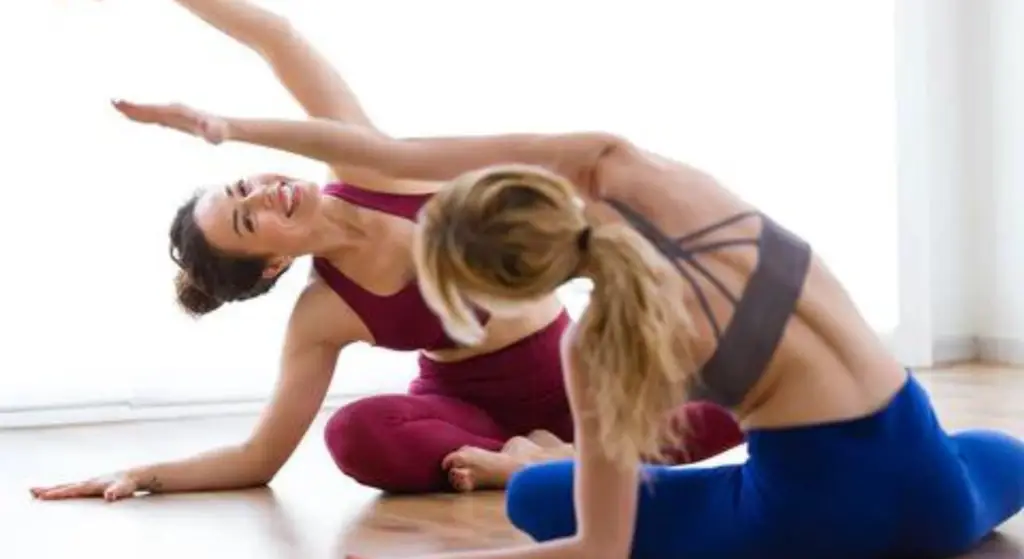
Regular yoga helps reduce stress, improve physical health, and focus the mind. But perhaps the greatest potential comes from utilizing the practice to enrich your Christian spiritual journey specifically.
Here are some recommended techniques:
Study Scripture and Devotionals About the Body
The Bible contains many verses emphasizing the importance of caring for our God-given bodies as vessels to serve His will.
Reflect on the following passages before practice:
1 Corinthians 6:19-20
“Do you not know that your bodies are temples of the Holy Spirit, who is in you, whom you have received from God? You are not your own; you were bought at a price. Therefore honor God with your bodies.”
1 Corinthians 3:16-17
“Don’t you know that you yourselves are God’s temple and that God’s Spirit dwells in you? If anyone destroys God’s temple, God will destroy that person; for God’s temple is sacred, and you together are that temple.”
Romans 12:1
“Therefore, I urge you, brothers and sisters, in view of God’s mercy, to offer your bodies as a living sacrifice, holy and pleasing to God—this is your true and proper worship.”
These verses inspire treasuring the body’s wellness to fully receive God working through you. Let yoga cleanse negative relationships with your physical form.
Create A God-Centered Space
Set a tranquil ambiance in your yoga spot conducive to spiritual connection. Incorporate elements like:
Prepare your space to feel enveloped by the Holy Spirit. The visual and auditory Christian focal points enhance moving prayer.
Foster Mind, Body, Spirit Unity
The core premise of yoga aims to unify the mind, body, and spirit through synchronized breath and movement. When flowing consciously through postures, sensations recede allowing our Being to feel vivaciously whole.
This cultivation of head-heart awareness developed on the mat transfers into daily living. Yoga practitioners learn to act from intuitive wisdom rather than automatically reacting to the ego’s fears or desires.
We gain the capacity to pause when emotionally triggered, turn the focus inward, and allow head and heart to realign – enabling response from the Higher Self rather than the wounded, grasping ego.
Thus yoga helps manifest the fruits of the Spirit – peace, patience, kindness, generosity – through conscious awakening of body and mind as instruments of the Soul.
Intentional Breath Practices
In yoga, the breath always serves as main control to either stimulate or soothe nervous system activity. Therefore learning breathwork skills equips a valuable asset.
When feeling anxious or upset, take 5-10 minutes to try these Pranayama rhythms:
Actively regulating breathing re-centers emotional equilibrium connecting us back to inner stillness. From this space of calm, you can process upsetting events or decisions from Divine wisdom.
Guided Yoga Nidra Meditations
Yoga Nidra is a powerful mindfulness meditation where you lay in Corpse Pose softly focusing on different body parts. Rotationally tense then relax muscle groups to consciously unwind both physical and mental holding.
When emerging from the deep state of relaxation, you feel revitalized with expanded spiritual awareness.
Look for Christian Yoga Nidra recordings with voice guidance including verbatim Bible passages woven into the progressive muscle relaxations. Let calming vocals with scriptural themes transport awareness to profoundly tranquil states.
This level of whole-being restoration leaves you abundantly poised to receive Divine inspiration about circumstances previously causing stress. Solutions flow effortlessly from renewed inner quiet.
Through yoga nidra, the Holy Spirit may implant intuitive ideas or bits of wisdom to problems while subconscious barriers are lowered.
Overcoming Fear & Doubt Around Practicing Yoga

Given yoga’s origins in Eastern spiritual traditions, some Christians harbor fear about whether aspects contradict their belief system. Certain teachings cause them to feel doubt or confusion related to blending yoga with Christianity.
Here’s guidance on overcoming some common sources of apprehension:
Yoga Detracts From Time With God
Some Christians worry spending hours moving through poses detracts from time better spent praying, reading scripture, or attending church services.
However exploring new avenues to connect with God often enhances, not replaces, existing spiritual rituals. Think of yoga as an additional tool to strengthen faith just as worship music, religious iconography/art, and attending retreats do.
Devout Christians practicing yoga testify it only expanded their sense of communion with Christ.
And remember – caring for bodily health enables serving the Lord with greater energy and clarity.
Accidentally Adopting Eastern Spiritual Beliefs
When first exposed to chanting Hindu sutras like “Om”, the mystical aspects of yoga can feel confusing or intimidating for Christians.
Fear arises of accidentally internalizing non-Christian ideas that betray their existing faith.
But consider how reading broad philosophical teachings in a college course differs from personal adoption of those worldviews. Or visiting Buddhist temples as cultural immersion during Asia travels.
You simply witness and study alternate paradigms without integrating the rituals into your everyday spiritual practice.
Likewise, a healthy examination of yogic principles serving only to deepen physical/mental wellness need not undermine your Christian creed.
Remain rooted in the Gospel’s teachings while openly granting yourself permission to explore new frameworks. Filter interpreted lessons through the lens of Jesus’ message.
Try Yoga With An Open Heart
Entering new territory like yoga draws trepidation and uncertainty. But walk forward with childlike curiosity instead of fearful hesitancy.
Set clear intentions – you aim simply to enhance physical health, reduce anxiety, and beautify your connection to your spiritual source.
Then openly allow yoga experiences to enrich your unique path without pressure to adapt practices conflicting with your belief system. Trust inner wisdom to incorporate aspects benefiting Christian growth while discarding incompatible elements.
Each soul’s journey toward the Divine differs. Yoga assists the process of knowing Thyself to perceive God’s essence within and all around. Approached with genuine aspiration, yoga feeds the soul.
Have faith that the Holy Spirit will guide your discernment. Let yoga blossom into another beautiful petal expanding your personal communion with Christ’s Consciousness.
Practice Yoga: Common Beginner Mistakes to Avoid
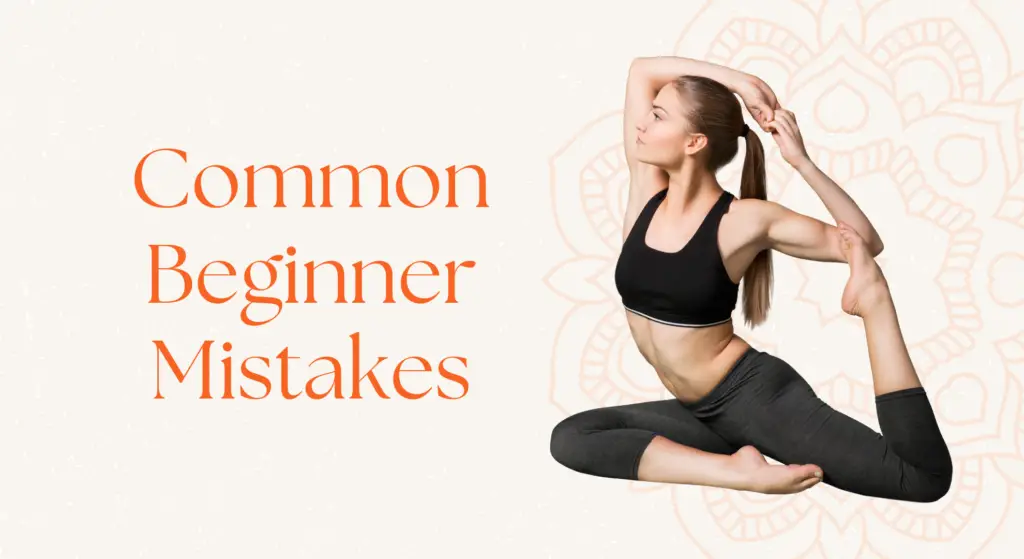
Those new to yoga often make similar errors hampering their progress and enjoyment of the practice. Being aware of these common pitfalls helps avoid potential frustration while benefitting quicker from yoga’s blessings:
Comparing Yourself to Others
Refrain from watching how flexible or skilled other students move in poses. Yoga meets us wherever we currently stand in life. Comparing where your body reaches its edge to another’s capacities only discourages unrealistic expectations about progress.
Instead, keep your eyes focused inward to feel and improve your own alignment. Measure growth by your inner experience staying present rather than getting distracted wishing the physical form could do more.
Pushing Too Hard Too Fast
Eagerness and enthusiasm for rapidly advancing leads many beginners to over-exert beyond reasonable limits. They strain to force their body into more extreme postures before building the necessary foundation.
But this risks painful injury and energetic burnout causing the abandonment of practice before tasting yoga’s nectar.
Patience allows safe adaptation into more challenging poses once connective tissues strengthen through gentler foundational movements. Let each session focus on relaxing deeper into supportive beginner flows instead of struggling into advanced pretzel-like positions.
Progress unfolds faster through gradual self-compassionate effort.
Not Practicing Enough Mindfulness
Merely mimicking a teacher’s instructions often focuses too heavily on physical accomplishments versus inward mindfulness. We miss much of yoga’s magic by concentrating solely on mastering external shapes.
Make time after moving through poses to close your eyes and turn your attention to the breath, bodily sensations, and mental/emotional states.
Allow moments of stillness to witness the inner landscapes yoga exposes. Notice areas of openness, freedom, and spaciousness as well as edges of rigidity and blockage without judging either.
Getting distracted by life’s endless to-do list prevents fully embedded in the grounding gifts of present-moment awareness yoga cultivates.
By taking pause to integrate inward, positive neuroplasticity emerges enabling wisdom and bliss to pervade daily consciousness.
The most advanced yogis exude peacefulness from presence – not physical prowess.
Conclusion: Key Takeaways
Exploring yoga as a Christian leads to immense benefits when practiced mindfully:
The teachings of Christ and the practice of yoga powerfully complement each other. By incorporating modifications aligned with your spiritual beliefs, yoga’s benefits to body, mind, and soul magnify connection to the Divine within.
